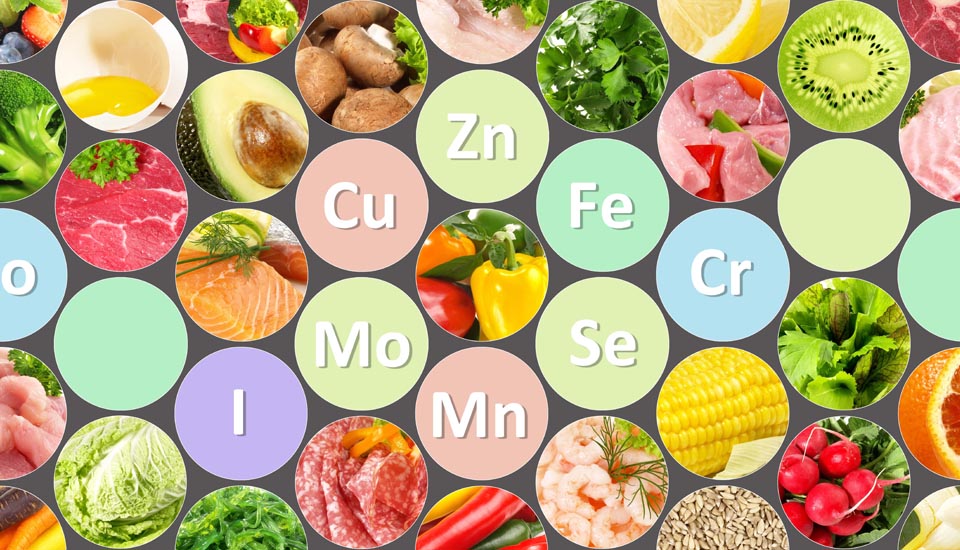What is Molybdenum? Our IV Therapy Toronto Lounge Answers
POSTED ON DECEMBER 19, 2023 BY TORONTO FUNCTIONAL MEDICINE CENTRE

Our IV therapy Toronto clinic has previously discussed the beneficial effects of mineral supplements, such as copper. Today, we feature another new mineral: molybdenum!
This nutrient is unique because the human body requires only small amounts, yet it’s needed for optimizing many body functions. It’s even a cofactor for enzymes that break down toxins and contributes to cellular functioning.
Plus, as a trace mineral, it’s crucial for disintegrating sulfites. “Sulfites are found naturally in foods and also sometimes added as a preservative. If they build up in the body, they can trigger an allergic reaction that can include diarrhea, skin problems or even breathing difficulties,” explains Healthline.
So, what else does molybdenum do? And what are the supplementation routes? The Toronto Functional Medicine Centre highlights facts about this mineral’s impact on cancer prevention, bone health, and optimal functioning.
Molybdenum Facts
- Small amounts of this mineral are found in your spleen, skin, lungs and muscle.
- Trace amounts can be consumed from plant-based items, leafy greens, legumes, nuts, and organ meats. However, molybdenum levels in the food depend on how much of the mineral is grown in the soil.
- Studies have shown that low levels of the mineral have resulted in esophageal cancer; this has demonstrated the importance of molybdenum content in both our soil and dietary needs. Healthline explains: “In one small region of China, esophageal cancer is 100 times more common than in the US. It has been discovered that the soil in this area contains very low levels of molybdenum, resulting in a long-term low dietary intake.”
- The mineral may play a role in battling gut-related candida. Candida naturally creates acetaldehyde, a toxin that is known to trigger brain fog, lack of energy, and inflammation. Supplementing with molybdenum could aid the liver in disabling acetaldehyde.
- The mitochondria in liver and kidney cells contain sulfite oxidase, which is an enzyme that contains molybdenum. Sulfite oxidase stimulates the oxidation of sulfite to sulfate for lipid and protein metabolism, which is an imperative process for cellular sulfite detoxification.
Supplement Options
If you want to increase this mineral intake, consider these approaches:
Dietary modifications: In a study from the American Journal of Clinical Nutrition, molybdenum absorption was confirmed to be low from soy-based foods. Speak to a functional medicine provider about non-soy sources, especially if you’re already on a restricted diet. Foods that are rich in molybdenum include carrots, fennel, almonds, cod, yogurt, lentils and oats.
Oral supplements: People diagnosed with a copper deficiency may not be recommended to ingest this. This is because molybdenum can lessen the absorption of copper in the body. If you’re advised to take oral supplements by your functional medicine provider, you can take them as tablets or capsules. High doses may induce gout-like symptoms, though, so please discuss a suitable dosage with your health practitioner.
Intravenous therapy/IV therapy: If you have malabsorption issues, intravenous infusion therapy (known as IV therapy), can alleviate nutritional shortcomings. IV therapy is designed to increase blood cell production and cellular energy, while offering a full absorption of nutrients. It bypasses the digestive tract because the solution is not orally consumed – rather, it’s intravenously inserted into the bloodstream. This means there’s a low chance of getting unwanted side effects from oral supplements.
How can you prepare your mind and body for your health goals? Health coaching and functional medicine programs could guide you towards optimal functioning. Our naturopathic doctor, medical doctor and nurse practitioner offer support for chief health concerns, such as: immune function, oxidative stress, infertility, thyroid conditions, seasonal infections, weight management, substance withdrawal symptoms, chronic fatigue syndrome, athletic recovery, and tissue repair. Find out about our I IV treatments below.
How to become a new patient at our IV Lounge
Intravenous drips from our IV Lounge are designed to address a lack of energy and improve cellular functioning. We offer vitamin drip treatments that include therapeutic doses of amino acids, high-dose vitamin C, folic acid, Myers Cocktail, mistletoe, glutamic acid, nicotinamide adenine dinucleotide (NAD IV therapy), glutathione, major antioxidants, and other beneficial ingredients.
At the Toronto Functional Medicine Centre, new patients are welcome! Becoming a patient at our IV Lounge requires a complete diagnostic session; this initial consultation allows us to discuss your health condition and other issues. (Functional medicine lab testing may be recommended to determine nutritional deficiencies, toxicities, etc.) After reviewing your health history and lab test results, we can offer you a personalized service of therapies, including IV nutrient therapy and/or other treatment modalities (i.e. herbal medicine, naturopathic medicine, Eastern and Western medicine, acupuncture, etc.).
Are you ready to make healthy changes? IV therapy from our Toronto clinic may provide new insight on your brain health, premature aging, energy levels, and more. Click here to request your DISCOVERY SESSION on intravenous therapy.
Disclaimer: The information in this article is designed for educational purposes only and is not intended to be a substitute for informed medical advice or care. This information should not be used to diagnose or treat any health problems or illnesses without consulting a doctor. Consult with a health care practitioner before relying on any information in this article or on this website.
References:
Blot WJ, Li JY, Taylor PR, Guo W, Dawsey S, Wang GQ, Yang CS, Zheng SF, Gail M, Li GY, et al. Nutrition intervention trials in Linxian, China: supplementation with specific vitamin/mineral combinations, cancer incidence, and disease-specific mortality in the general population. J Natl Cancer Inst. 1993 Sep 15;85(18):1483-92. doi: 10.1093/jnci/85.18.1483. PMID: 8360931.
John A. Maclaren, Ph.D., Diana Armen, B.S., Pigmentation of Candida albicans by Molybdenum, American Journal of Clinical Pathology, Volume 30, Issue 5, 1 November 1958, Pages 411–422, https://doi.org/10.1093/ajcp/30.5.411
Komada H, Kise Y, Nakagawa M, Yamamura M, Hioki K, Yamamoto M. Effect of dietary molybdenum on esophageal carcinogenesis in rats induced by N-methyl-N-benzylnitrosamine. Cancer Res. 1990 Apr 15;50(8):2418-22. PMID: 2317826.
Lewis RC, Johns LE, Meeker JD. Exploratory analysis of the potential relationship between urinary molybdenum and bone mineral density among adult men and women from NHANES 2007-2010. Chemosphere. 2016 Dec;164:677-682. doi: 10.1016/j.chemosphere.2016.08.142. Epub 2016 Sep 16. PMID: 27639340; PMCID: PMC5048579.
Mellis AT, Roeper J, Misko AL, Kohl J, Schwarz G. Sulfite Alters the Mitochondrial Network in Molybdenum Cofactor Deficiency. Front Genet. 2021 Jan 7;11:594828. doi: 10.3389/fgene.2020.594828. PMID: 33488670; PMCID: PMC7817995.
Nouri M, Chalian H, Bahman A, Mollahajian H, Ahmadi-Faghih M, Fakheri H, Soroush A. Nail molybdenum and zinc contents in populations with low and moderate incidence of esophageal cancer. Arch Iran Med. 2008 Jul;11(4):392-6. PMID: 18588371.
Odularu AT, Ajibade PA, Mbese JZ. Impact of Molybdenum Compounds as Anticancer Agents. Bioinorg Chem Appl. 2019 Sep 10;2019:6416198. doi: 10.1155/2019/6416198. PMID: 31582964; PMCID: PMC6754869.
Turnlund JR, Weaver CM, Kim SK, Keyes WR, Gizaw Y, Thompson KH, Peiffer GL. Molybdenum absorption and utilization in humans from soy and kale intrinsically labeled with stable isotopes of molybdenum. Am J Clin Nutr. 1999 Jun;69(6):1217-23. doi: 10.1093/ajcn/69.6.1217. PMID: 10357742.
Turnlund JR, Keyes WR, Peiffer GL. Molybdenum absorption, excretion, and retention studied with stable isotopes in young men at five intakes of dietary molybdenum. Am J Clin Nutr. 1995 Oct;62(4):790-6. doi: 10.1093/ajcn/62.4.790. PMID: 7572711.
Vally H, Misso NL. Adverse reactions to the sulphite additives. Gastroenterol Hepatol Bed Bench. 2012 Winter;5(1):16-23. PMID: 24834193; PMCID: PMC4017440.
“Why Molybdenum Is an Essential Nutrient” from Healthline, By Alexandra Rowles, RD on May 6, 2017, viewed on December 7, 2022.

